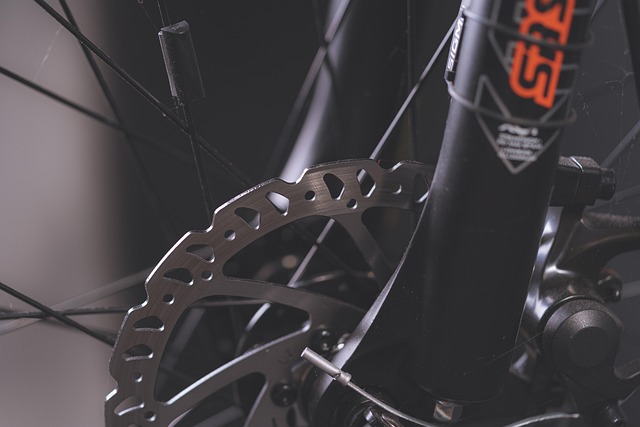Brake systems require regular attention for optimal safety and performance. Owners should monitor pad wear indicators, inspect rotors, calipers, and consider select brake replacements like rotor or pad upgrades. Understanding vehicle type, driving conditions, and terrain guides selection. Timely maintenance, inspections, and correct installation enhance stopping power, extend tire life, and ensure safer driving experiences.
Looking to upgrade your vehicle’s stopping power? New brakes can significantly enhance safety and performance. This guide explores various brake replacement options, from understanding wear and tear to selecting the best parts. We delve into different types of brakes, factors to consider during selection, and a step-by-step installation process highlighting key benefits. Discover how to make an informed decision when choosing Select Brake Replacements for improved safety and driving dynamics.
- Understanding Brake Wear and Tear
- Types of Brake Replacements Explored
- Factors to Consider When Selecting New Brakes
- Installation and Benefits: A Step-by-Step Guide
Understanding Brake Wear and Tear

Brake systems are one of the most critical safety components of any vehicle. Over time, they undergo significant wear and tear due to constant use. Understanding this process is essential for vehicle owners to recognize when it’s time for select brake replacements. Pad wear indicators, visible as markers on the brake pads, signal the extent of friction material remaining, providing a clear sign that a hydraulic brake overhaul might be necessary.
Regular inspection reveals not just pad wear but also the condition of other critical components like rotors and calipers. Given that brakes are interconnected with tire and brake packages, ensuring optimal performance involves comprehensive maintenance. This proactive approach not only enhances stopping power but also extends the life of both brakes and tires, contributing to safer driving experiences.
Types of Brake Replacements Explored

When it comes to enhancing a vehicle’s stopping power, choosing the right brake replacements is paramount. There are several options available, each offering unique advantages depending on driving conditions and preferences. One popular choice is the brake rotor replacement, which involves swapping out the existing rotors for newer, high-performance models. This upgrade improves heat dissipation, leading to better braking performance in extreme conditions.
Additionally, many drivers opt for bicycle brake repairs as a cost-effective solution. While not as dramatic as a complete replacement, upgrading the brakes on a bicycle can significantly improve stopping efficiency. Regular brake system checks are essential to ensure optimal performance and safety, allowing riders to identify any issues early on. These repairs can range from simple adjustments to more complex components, ensuring a smoother and safer riding experience.
Factors to Consider When Selecting New Brakes

When selecting new brakes for improved stopping power, several key factors come into play. The first consideration is the type of vehicle you own—cars and trucks have distinct brake systems, with each requiring specific components tailored to handle varying weights and driving conditions. For instance, a high-performance sports car will need different brake replacements than a family truck, which has higher weight and often demands more robust braking systems.
Additionally, it’s crucial to evaluate your driving habits and the terrain you frequently traverse. High-mileage vehicles or those used for rugged off-road adventures necessitate regular brake system checks and potentially more advanced hydraulic brake overhauls to ensure optimal performance. Remember that proper maintenance, including timely truck brake service and routine brake inspections, is vital for safety and extended component lifespan.
Installation and Benefits: A Step-by-Step Guide

Installing new brakes is a straightforward process that can significantly enhance your vehicle’s stopping power and overall safety. Here’s a step-by-step guide to help you navigate the selection and fitting of replacement brake components, ensuring a smoother and more controlled driving experience.
1. Select Brake Replacements: The first step involves choosing the right brake parts for your vehicle. Consider factors like the type of brakes (disc or drum), material, and performance characteristics. Modern high-performance brake pads offer improved stopping power and reduced noise compared to standard pads. For better heat dissipation, consider ceramic or steel rotors, which are more durable than stock options.
2. Diagnose Brake Noise: If your vehicle exhibits unusual brake noises, such as squealing or grinding, it’s crucial to diagnose the issue. These sounds often indicate worn-out pads or rotors. You can easily inspect and replace faulty components yourself if you’re comfortable with car maintenance. If unsure, consult a professional mechanic who can perform a brake noise diagnosis.
3. Prepare for Installation: Gather the necessary tools and ensure your vehicle is parked on a level surface. Loosen the wheels using a wrench to gain access to the brakes. Some vehicles may require removing the wheel arch liners or other components to expose the brake calipers and rotors.
4. Replace Brake Components: Remove the old brake pads by unscrewing or unclamping them from the caliper. Install new pads, ensuring they are properly seated. Next, address the rotors. If replacing a rotor, use skid plate brake mounts for secure installation. Clean the rotor surface thoroughly to ensure optimal braking performance.
Upgrading your brakes with new replacements can significantly enhance stopping power, ensuring safer driving. By understanding brake wear, exploring various types, considering essential factors, and following a simple installation guide, you can make an informed decision. Remember, the right select Brake Replacements can transform your vehicle’s performance, giving you peace of mind on the road. In terms of safety, it’s a small step that makes a big difference.
